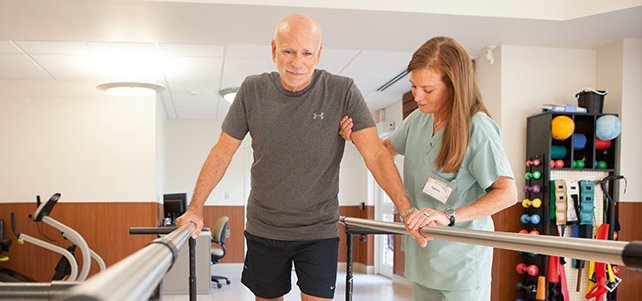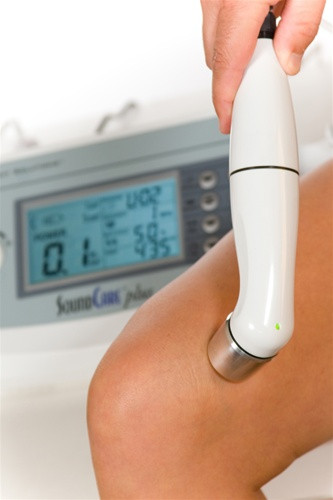 18th Jan 2017
18th Jan 2017
How to Treat the Top 10 Health Concerns in the Geriatric Community - Part 1
Geriatric rehabilitation is a growing specialty that involves rehabilitation and physical therapy for the elderly, a rapidly growing population. Not only are people living longer, but advances in medicine have helped patients survive what used to be deadly diseases or medical incidents like heart attack or stroke.

With online life expectancy calculators, aging and its impact on quality of life is gaining more awareness and for good reason. Physical health is of paramount importance towards maintaining a good quality of life as we age, therefore it’s important to have rehabilitation practitioners that are skilled in treating geriatric issues. The top 10 health issues that are of concern in the geriatric community are:
- Joint pain or arthritis
- Osteoporosis
- Alzheimer’s
- Post-stroke rehabilitation
- Hip replacement
- Knee replacement
- Loss of mobility
- Fall risks
- Diabetic Neuropathy
- Heart Disease
Physical therapy is a great tool for helping elderly patients with these issues. In addition, physical therapists can give patients tools and education towards maintaining their quality of life and independence.
Treating the Top 10 Health Concerns in the Geriatric Community
Treating Arthritis: Currently, almost 50% of the population over the age of 65 years old has been diagnosed with some form of arthritis, most commonly osteoarthritis. Arthritis is a combination of symptoms including:
- Inflammation
- Pain
- Stiffness
- Loss of range of motion
One of the first issues a practitioner faces is reducing the severity of osteoarthritis symptoms. Some of the easiest ways to do this is with the use of pain-relieving modalities, like ultrasound therapy machines.
- Ultrasound Therapy: Ultrasound therapy is beneficial in both reducing pain and increasing function for the joints when used to treat Osteoarthritis. Varying sizes of soundhead applicator make it easy to treat different parts of the body from the knees (1 cm or 5 cm) to the hips (5 cm or 10 cm). What’s more, most devices include either continuous or pulsed modes. When treating osteoarthritis, a practitioner can use the continuous mode to reduce inflammation, while using the pulsed mode to target areas of pain. For more information please here is an article about how to choose the an ultrasound applicator that's best for you.
Treating Osteoporosis: Osteoporosis refers to the thinning or weakening of the bones. It most commonly effects women and more than 55% of patients over the age of 50 are diagnosed with it. Osteoporosis leaves patients vulnerable to bone fractures. While osteoporosis is considered a “silent” disease, meaning there aren’t many outward symptoms, there are tools a physical therapist can use to help patient’s function with osteoporosis.
- Balance Platform: Fall risks are a big concern for osteoporosis patients, because they can lead to fractures. There are 300,000 hospitalizations due to hip fractures in the United States each year. Working with a balance platform can help to support a patient that is using an exercise ball or balance pad while they work on their strength and balance exercises.
Treating Alzheimer’s: About 5.2 million Americans (40% of people over the age of 85) suffer from Alzheimer’s disease. Alzheimer’s disease is most often accompanied by memory loss, cognitive difficulties and a lowered ability to perform daily tasks. Physical activity can help delay the onset of these symptoms while improving a patient’s function with day-to-day activities. A study published in Clinical Interventions in Aging found that 50% of Alzheimer’s sufferers also suffer from chronic pain.
- Hydrotherapy: Hydrotherapy in the form of warm-water whirlpool therapy can be beneficial in reducing body pain in Alzheimer’s patients. Not only is whirlpool therapy a gentle pain relieving alternative, it’s also non-invasive and offers no side effects that would interact negatively with the medications prescribed for the treatment of Alzheimer’s.
Treating Post-Stroke: Stroke is the leading cause of long-term disability in the United States. There are nearly 800,000 strokes each year within the United States with a third of these recurrent attacks. With the cost of health care services, medications, and lost productivity, treating strokes cost the United States $34 billion annually.
Symptoms of stroke include:
- Difficulty walking
- Trouble speaking or aphasia
- Cognitive impairment
- Paralysis or numbness of the face, arm, or leg (either on one side or both)

After a stroke, physical therapy can help patients regain their function in each of these areas, using tools like Continuous Passive Motion machines.
- Continuous Passive Motion (CPM) Machine: The most common impairment after a stroke is a decrease in function for either one or both arms. An abstract published in Clinical Rehabilitation found that the use of a continuous passive motion machine helped improve shoulder range of motion and stability. When combined with therapeutic exercise, CPM machines can also improve function and decrease disability in the affected limb.
Treating Hip Replacement: Total hip replacement or Arthroplasty is one of the most common surgical intervention performed in the elderly community. Hip replacements are usually recommended for patients who suffer from severe arthritis or have suffered a hip fracture. The purpose of a hip replacement procedure is to:
- Reduce pain
- Improve joint mobility
- Return range of motion
- Restore function in daily activities

Once a patient enters rehabilitation following a total hip replacement, it’s important create a regimen that strengthens the muscles surrounding the hip joint. One of the tools that a physical therapist may use to strengthen the hip joint when treating a hip replacement patient is an underwater treadmill.
- Underwater Treadmill: An underwater treadmill is a great tool for hip replacement patients because it has multiple benefits without the stress of being full weight-bearing. An underwater treadmill helps hip replacement patients:
- Strengthen their balance and gait training skills
- Gently increase range of motion
- Improve biomechanics, stamina, flexibility and strength
As you can see, there are many issues that face our elderly population. With early intervention and access to physical therapy, the elderly population can not only maintain their quality of life, but continue to thrive. Keep on the lookout for part two of our How to Treat the Top 10 Health Concerns in the Geriatric Community(coming soon) where we’ll continue to explore the top difficulties the elderly patient population faces and the best ways to treat them.
Continued: How to Treat the Top 10 Health Concerns in the Geriatric Community - Part 2
For more information on Elder Care and other topics related to physical therapy and sports medicine please checkout the ProHealthcareProducts.com Blog.






